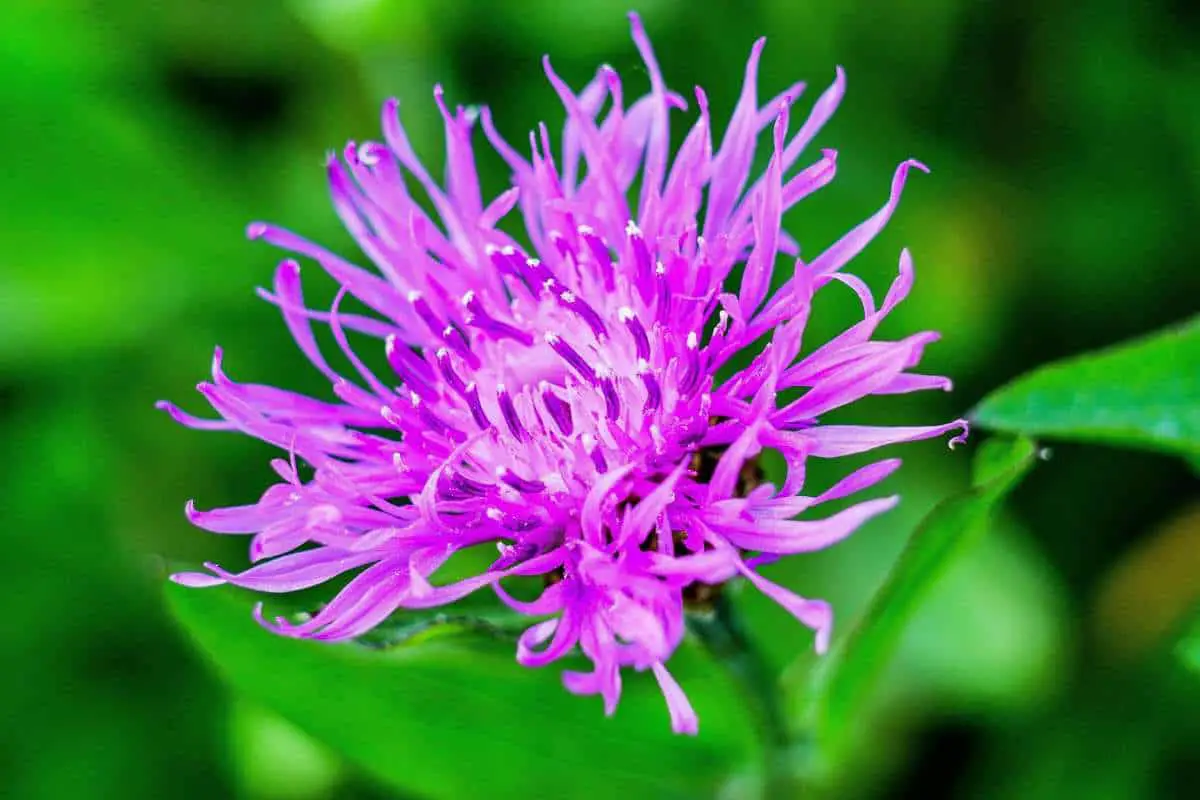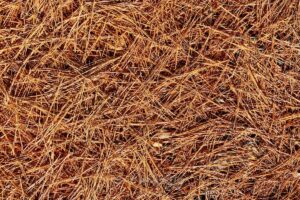This page may contain affiliate links. If you click and buy, we might get a small commission at no cost to you.
Different types of plants may come to mind when you hear the word “weed.” It could be an overgrown patch of grass in your yard or a plant growing in the cracks in your sidewalk. Whatever it is, these are the types of plants you don’t want around your house.
You can find weeds almost anywhere in Oregon. In fact, there are so many weeds in Oregon that they can be found growing in almost any environment, from forests to cities, fields to farmlands, parks to backyards, and even parking lots! Here are 16 weeds in this state, along with information on how to control them.
16 Weeds in Oregon
1. Common bugloss

Scientific Name: Anchusa officinalis
One of the common weeds you’ll see in Oregon is the common bugloss. As long as there are sandy and gravelly soils present, they can grow almost anywhere, including fields, pastures, and roadside ditches.
Their flowers are purple and bloom in a stalk with multiple flowers, and they bloom from May to September. They have large and dense strands that can compete with other native plants, so manual removal is encouraged.
2. Water primrose
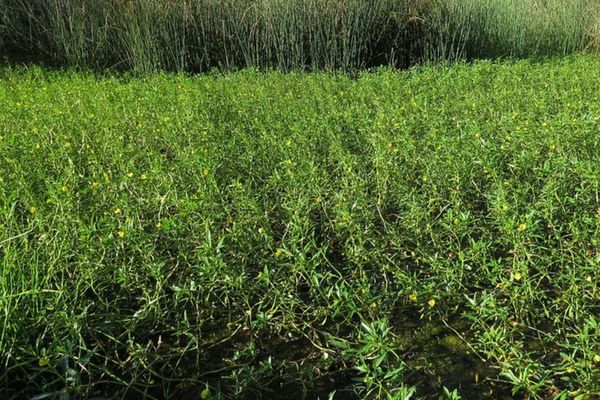
Scientific Name: Ludwigia peploides
Water primrose is an aquatic plant that grows quickly in Oregon’s aquatic habitats. In fact, buying this plant to use as an ornamental isn’t recommended. This plant grows on the water’s surface, such as in marshes, ponds, and ditches, where it forms dense mats.
It has floating stems, long narrow leaves, and bright yellow flowers. It can spread through seeds as well as stem fragments.
3. Dalmatian toadflax
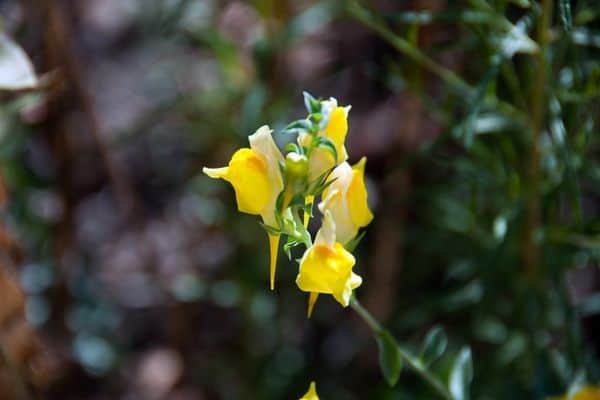
Scientific Name: Linaria dalmatica
Dalmatian toadflax is a lovely weed that can grow to be 3 feet tall. It’s common along roadsides and in cultivated fields. It’s an upright perennial with many stems on which the flowers grow.
These yellow flowers are usually found at the top of the plant. They spread via seed dispersals, in which seeds are contained within a capsule.
Because this plant is difficult to eradicate, prevention by pulling and cultivating young toadflax is always the best option.
4. Portuguese broom
Scientific Name: Cytisus striatus
Portuguese broom is a weed that spreads quickly and can quickly take over your garden. It’s easy to identify because it prefers poor, well-drained soils and hot climates like those found in Oregon. If you find Portuguese broom in your yard, be aware that it’s a highly competitive plant.
The stem is silvery, and the flowers are pale yellow. You can control this plant by removing it as soon as it begins to grow, as this plant can be difficult to remove due to its deeply rooted roots.
5. Canada thistle
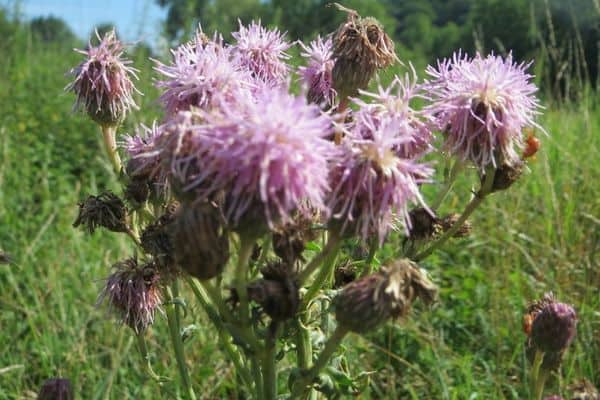
Scientific Name: Cirsium arvense
Canada thistle is a common weed in Oregon, thriving in a variety of habitats and climates. It’s distinguished by its purple or pink flowers, which bloom from June to August. If you notice it growing near your home or business, you should get rid of it as soon as possible because it can cause problems by drying out the soil and draining its nutrients.
There are several methods for getting rid of Canada thistle on your property. You can utilize mechanical methods like pulling or digging, as well as chemical ones like herbicide or vinegar.
6. Traveler’s joy
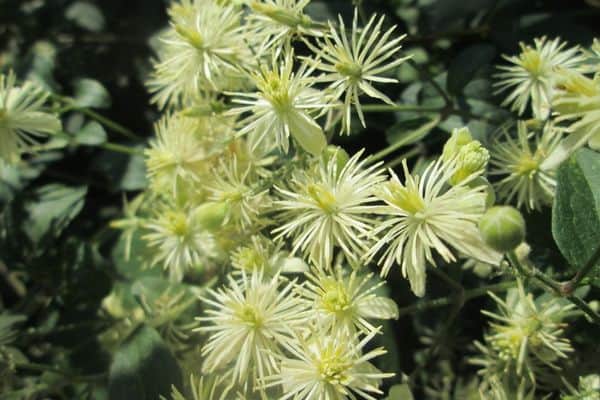
Scientific Name: Clematis vitalba
Traveler’s joy is a common weed in Oregon. They can be found on highways, in forests, and in gardens. The weeds grow in moist soil and temperate climates.
These plants have climbing vines that grow faster than English Ivy and pose a significant threat to trees and shrubs. It has small white flowers that grow in clusters. Despite looking slightly similar to English Ivy, traveler’s joy loses its leaves in the winter.
7. Spotted knapweed

Scientific Name: Centaurea stoebe
Spotted knapweed is an invasive weed that has spread throughout Oregon. It thrives in sandy soils with little or no clay and grows well in a variety of climates and soil types. They’re common in pastures, forests, gravel pits, railways, and trails.
From July to September, this perennial plant produces pinkish-purple flowers. The plant grows to be about 2 to 4 feet tall and spreads via seeds.
8. Rush skeletonweed
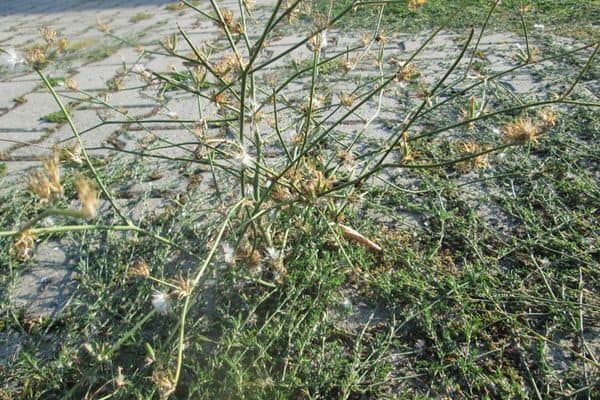
Scientific Name: Chondrilla juncea
Rush skeletonweed is common in Oregon and can be found in a variety of habitats. This weed prefers sandy soils and warm temperatures and is drought tolerant.
This plant is distinguished by its pointed and jagged leaves, which resemble those of a dandelion. When broken, it releases a milky sap. Its yellow flowers are also in bloom from July to September. Rush skeletonweed can be removed by pulling or digging it up.
9. Hairy bittercress
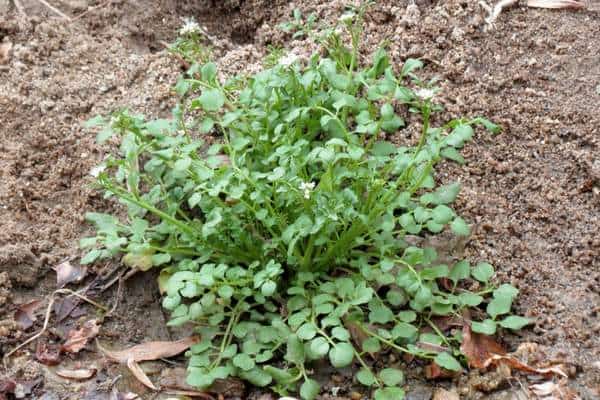
Scientific Name: Cardamine hirsuta
Hairy bittercress is a common weed in Oregon, and you can find it in areas with moist soil and lots of shade, such as gardens and lawns.
The plant is distinguished by its hairy leaves and small white flowers that grow on the tips of tall stems. It can grow to be up to 12 inches long and has a large number of seeds that can take over a garden.
10. Garlic mustard
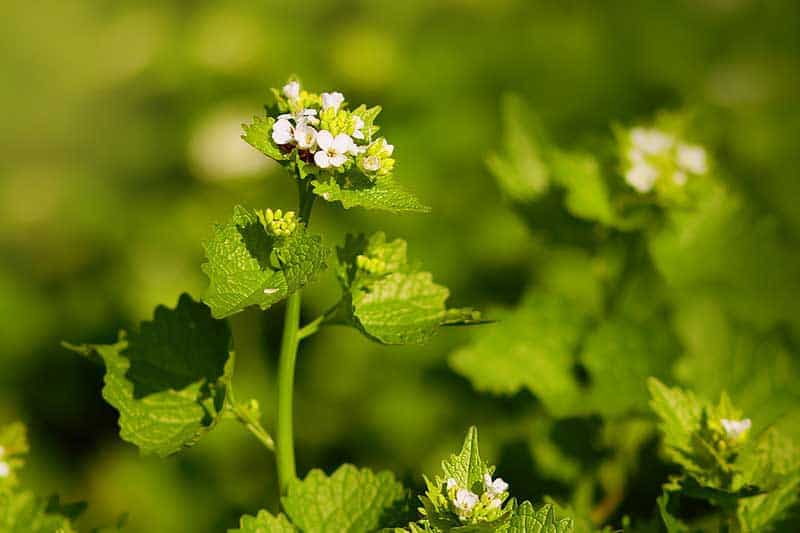
Scientific Name: Alliaria petiolata
Garlic mustard grows best in shady, moist areas with rich soil, but it can tolerate a wide range of conditions. Garlic mustard produces white flowers in March and April, and the seeds are dispersed by wind and water.
Garlic mustard is an invasive species that’ll take over other plants if it’s not controlled by people who work hard to keep plants healthy and happy all year. You can control them by manually pulling them off.
11. Perennial pepperweed
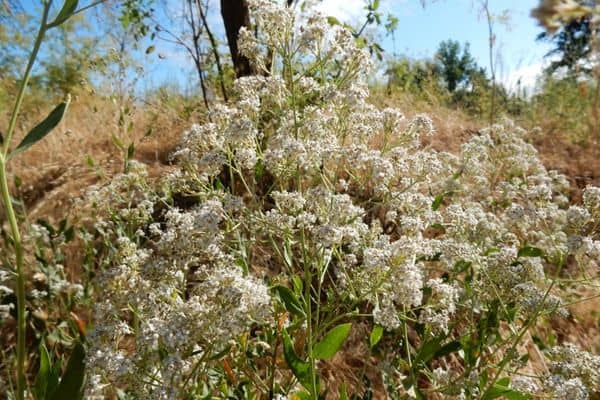
Scientific Name: Lepidium latifolium
Perennial pepperweed is one of the weeds that can interfere with the growth of other plants in their vicinity. They’re particularly common in eastern Oregon and along the west coast, where there are plenty of saline soils and salt marshes.
These semi-woody weeds can grow up to six feet tall. Its leaves are green, either bright green or grayish green. Herbicides such as glyphosate can be used to completely eliminate this plant and prevent it from growing.
12. English holly
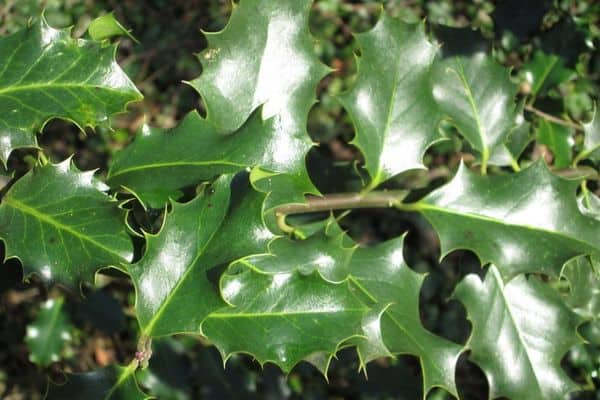
Scientific Name: Ilex aquifolium
English holly, also known as Christmas holly, is a plant that is popular during the holiday season due to its dark leaves and red berries. It’s native to Central Europe, but it was introduced to Oregon and has become an invasive plant.
It prefers rich soils, but it can thrive in a variety of environments, including acidic soils. English holly has deep and strong roots that can spread quickly throughout its environment, affecting other plants.
13. Ribbongrass

Scientific Name: Phalaris arundinacea
Another common weed found in Oregon is ribbongrass. This plant is typically found in abandoned sites and gardens where it was once a favorite of gardeners. It’s a perennial grass that favors moist soils and can reach up to a height of about 18 inches.
It has green and white leaves and white flowers in early spring. If you want to get rid of it, use a shovel underneath the plant, including the 18-inch soil, to eradicate it.
14. Shiny geranium
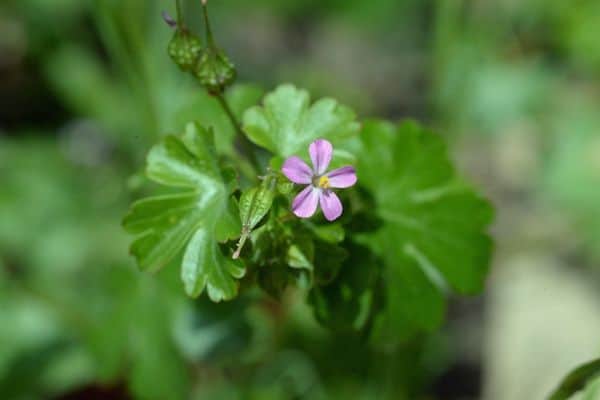
Scientific Name: Geranium lucidum
Shining geraniums in your home garden are a great way to add color and texture, but these plants aren’t so great if they start to grow in your yard. These weeds have shiny leaves and pink flowers, and they spread by seed. They can also easily replace and compete with plants in your yard.
If you have shining geraniums in your yard or garden, you should remove them and pull them by the roots before they produce seeds.
15. Tansy ragwort

Scientific Name: Senecio jacobaea
Tansy ragwort is a weed that may appear in your garden in Oregon. Tansy ragworts have small yellow flowers and green leaves on top but are lighter in color underneath.
They’re common in pastures, along roads and trails, and in areas with loamy or sandy soil. Since the wind usually carries its seeds, this plant can spread quickly. Tansy ragworts are also toxic to cattle and horses, which live in the areas where they grow.
16. Leafy spurge
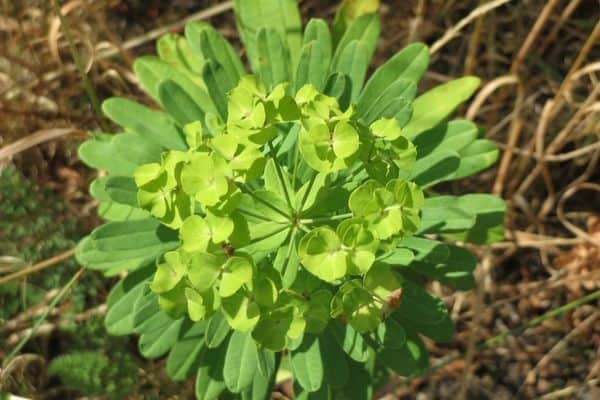
Scientific Name: Euphorbia esula
Leafy spurge is a common weed in Oregon, particularly in areas where it gets a lot of sun. It grows in a variety of soil types but prefers dry soil. Leafy spurge is a noxious weed that can be identified by its bluish-green leaves and yellow bracts, which bloom from May to June.
You can get rid of leafy spurge by spraying individual plants with herbicide or pulling it out by hand. Consistent mowing is also necessary to reduce seed production.
